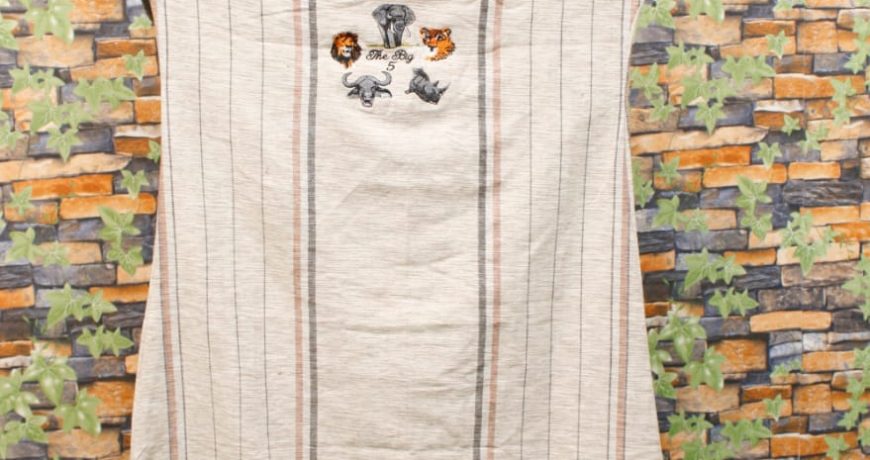The Rich Tapestry of African Textiles
A Journey through History and Heritage
African textiles are not just fabrics; they are narratives woven into threads, each telling a unique story of a continent rich in history and culture. These textiles are a testament to Africa’s diverse heritage, reflecting the skills and artistry passed down through generations. From the famous Kente cloth of Ghana to the intricate patterns of Nigeria’s Adire, each textile is a chapter in the continent’s vast cultural anthology.
The Language of Patterns and Colors
In African textiles, every color, pattern, and motif has a meaning. For instance, the Kente cloth, traditionally worn by the Akan people of Ghana, is known for its vibrant colors and geometric patterns. Each color in Kente has a specific meaning: gold signifies status and serenity, green for renewal, blue for pure spirit and harmony, and so on. These textiles are not just clothing but are used in various ceremonies and milestones, such as weddings, coronations, and festivals, serving as a mode of communication and a symbol of identity.
Regional Variations: A Canvas of Diversity
Across Africa, each region has its unique textile, distinguished by its techniques, motifs, and uses. In East Africa, the Maasai people are renowned for their Shuka cloth, a bright, checkered fabric that is a vital part of their identity. West Africa’s Bogolanfini, or mud cloth, from Mali, is another marvel. Made using an age-old process of dyeing with fermented mud, it creates striking patterns that are deeply symbolic. In Southern Africa, the Ndébélé of South Africa are known for their colorful geometric patterns, which adorn their homes and clothes, telling stories of their cultural beliefs and customs.
The Techniques: A Blend of Tradition and Innovation
The creation of African textiles is an art form, that employs techniques that have been refined over centuries. Weaving, dyeing, batik, and embroidery are some of the common methods used. These techniques are not just about producing fabric; they’re about preserving a legacy. In recent years, there’s been a surge in blending traditional methods with modern technology, giving birth to contemporary designs that stay true to their roots.
The Global Impact of African Textiles
Fashion Industry: A Source of Inspiration
African textiles have long influenced the global fashion industry. Designers worldwide draw inspiration from the intricate patterns, vibrant colors, and unique textures of these fabrics. African prints have found their way onto international runways, bringing a piece of African heritage to global audiences. This fusion of traditional African aesthetics with contemporary fashion has led to a rise in the popularity of African-inspired clothing worldwide.
Economic Significance: Empowering Communities
The production of African textiles is more than just a cultural practice; it’s a vital source of income for many communities. From cotton farmers to weavers and dyers, the textile industry supports millions of livelihoods across the continent. By purchasing authentic African textiles, consumers are not only acquiring a piece of art but also contributing to the sustenance of these traditional practices and the economic empowerment of African artisans.
Sustainability: A Step Towards Eco-Friendly Fashion
In an era where sustainability in fashion is becoming increasingly important, African textiles offer an eco-friendly alternative. Many African fabrics are produced using organic materials and traditional techniques that have a lower environmental impact compared to mass-produced textiles. This sustainable approach to textile production is not just good for the environment but also resonates with the global consumer’s growing consciousness towards ethical fashion.
Preserving and Promoting African Textile Heritage
Challenges and Opportunities
Despite their global appeal, African textiles face challenges such as competition from cheap imports and the loss of traditional skills. There’s a growing need to preserve these ancient techniques and promote the uniqueness of African textiles. Initiatives like training programs for young artisans, global exhibitions, and the integration of African textiles into contemporary fashion are steps in the right direction.
The Role of Digital Platforms
In the digital age, African textiles are finding new avenues of promotion and preservation. Social media platforms, online marketplaces, and digital storytelling are playing a crucial role in bringing these fabrics to a global audience. Through these digital channels, African textiles are not just reaching new markets but also educating the world about Africa’s rich textile heritage.
A Fabric of Unity and Pride
African textiles are more than just materials woven together; they are a fabric of unity, pride, and identity. They represent the resilience, creativity, and spirit of the African continent. As African Bravo Creatives, we believe that these textiles are not just a part of our heritage but also a beacon of hope and inspiration for the future. By embracing and promoting these beautiful creations, we can continue to celebrate and preserve the rich tapestry of African culture for generations to come.
As we celebrate the rich heritage of African textiles, we invite you to join us in this journey of discovery and appreciation. Explore our collection, support local artisans, and share the beauty of these textiles with the world. Together, let’s keep the vibrant spirit of Africa’s textile tradition alive and thriving.


